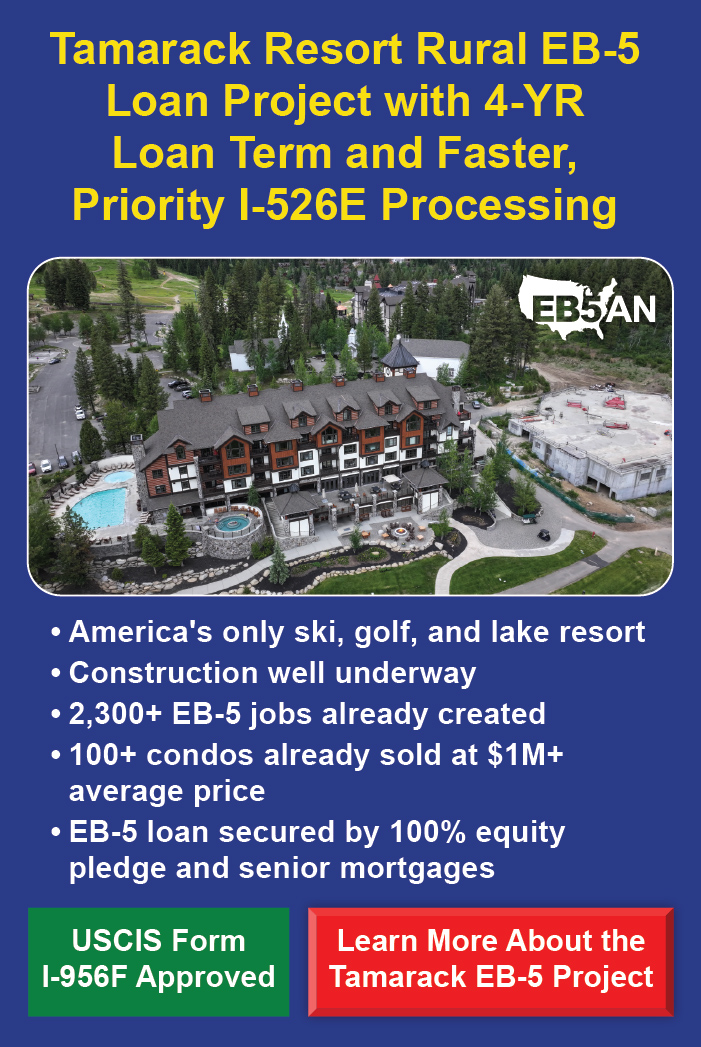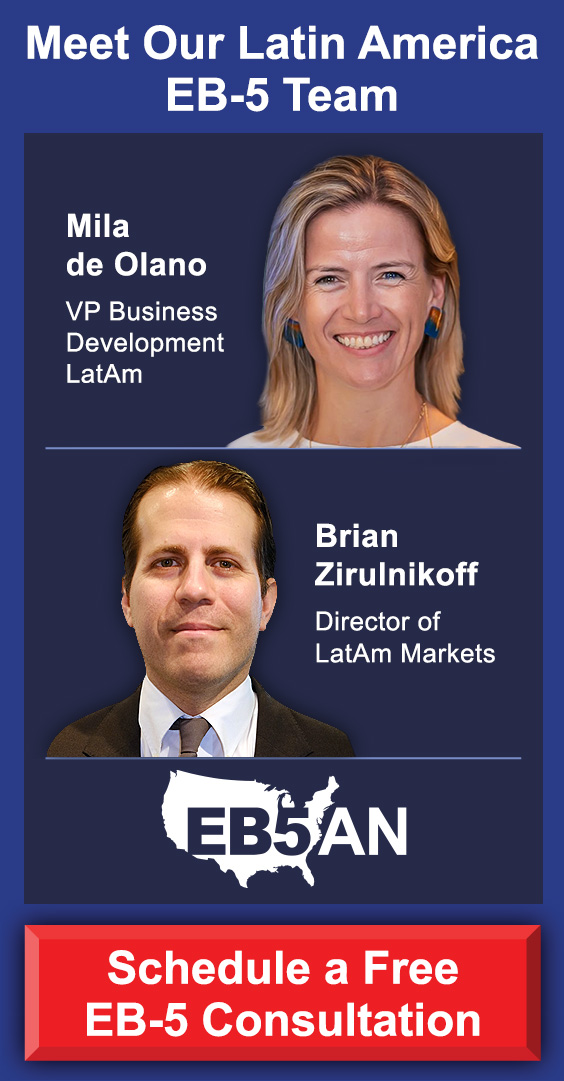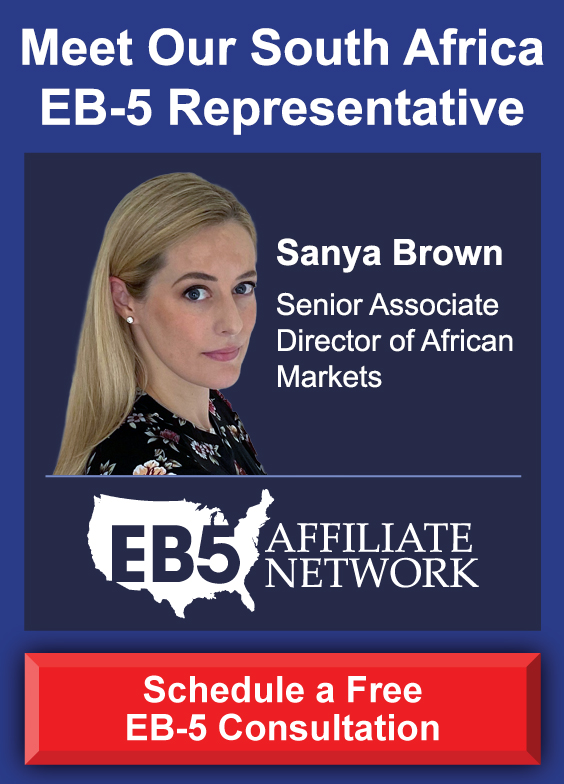New Zealand citizens often find themselves drawn to the United States for various reasons, including career and entrepreneurial opportunities, educational pursuits, and family reunification. The shared language and similar cultural values also make the transition to permanent residence appealing.
For those wishing to live and work in the U.S. permanently, the ultimate goal is obtaining a U.S. Green Card, which would give the benefit of permanent residence.
This coveted document grants lawful permanent residency to foreign nationals, allowing them to stay indefinitely in the U.S., work freely, and access a variety of benefits.
This article explores the various options available for New Zealand citizens to obtain a U.S. Green Card, with a special focus on the EB-5 Investor Visa.
Top 5 Best Options For New Zealand Citizens to Get Green Cards
Immigrate From New Zealand to the USA With EB5AN
Top 5 Best Options For New Zealand Citizens to Get Green Cards
As a New Zealand citizen, for any of the visa types mentioned below, in order to receive a resident visa, you will need a valid passport to apply.
Marriage & Fiancé Visas
Marriage-based Green Cards are one of the most straightforward paths to permanent residency for New Zealand citizens who are married to a U.S. citizen or permanent resident, however, they only apply to specific circumstances.
There are two main types of visas in this category: the CR-1/IR-1 visa for spouses and the K-1 visa for fiancés.
Specifics of Marriage & Fiancé Visas
- Eligibility: You must be legally married to a U.S. citizen or permanent resident. The K-1 visa applies if you are engaged to a U.S. citizen.
- Key Requirements: You will need to prove that your relationship is genuine, and not just for the purpose of obtaining a Green Card. This could include providing evidence like joint financial records and photos.
- Application Process: You’ll start by submitting Form I-130 (for marriage-based) or Form I-129F (for fiancé visa) to the United States Citizenship and Immigration Services (USCIS). After approval, you’ll undergo an interview with the U.S. embassy in New Zealand before being granted the visa.
Family Sponsorship Visas
Family sponsorship Green Cards allow U.S. citizens and permanent residents to sponsor certain family members for immigration. The family member must be the spouse, parent, child, or sibling of the U.S. sponsor, although specific categories of relatives may have different waiting times.
Specifics of Family Sponsorship Visas
- Eligibility: Citizens can sponsor spouses, children, parents and siblings. Permanent residents can sponsor spouses and unmarried children.
- Application Process: To apply, the U.S. citizen or permanent resident must submit Form I-130 and Form I-864 to USCIS, proving their relationship with the beneficiary. After approval, the applicant must go through consular processing in New Zealand before receiving their visa.
Diversity Lottery Visa
The Diversity Immigrant Visa (DV) Lottery offers a random selection of individuals from countries with historically low rates of immigration to the United States, allowing them the chance to apply for a Green Card.
Specifics of Diversity Lottery Visa
- Eligibility: New Zealand is typically eligible for the DV lottery, but participation is based on a random drawing.
- Challenges: The odds of winning the lottery are very low, as the U.S. only issues 50,000 diversity visas annually and millions of people around the world apply.
- Application Process: To apply, eligible individuals must submit their application through the official DV Lottery website during the open registration period (usually in the fall).
While the diversity visa lottery may seem like an attractive option, it is often not the most reliable path to a Green Card due to its uncertainty and long waiting times.
Immigrant Work Visas (EB-1, EB-2, EB-3)
Employment-based Green Cards are designed for individuals who possess certain professional skills, extraordinary abilities, or a job offer from a U.S. employer.
Specifics of Immigrant Work Visas
- EB-1 Visa: This is for individuals with extraordinary abilities in the arts, sciences, education, business, or athletics. It’s also available to outstanding professors and researchers, or multinational executives.
- EB-2 Visa: Aimed at professionals with advanced degrees or those with exceptional ability in their field.
- EB-3 Visa: This is for skilled workers, professionals, and unskilled workers.
- Timeframes: Processing times for employment-based visas can be long, especially for EB-2 and EB-3 applicants from countries with high demand where backlogs can extend to several years. Some Indian EB-3 applicants have been waiting for a visa to become available since 2012. Though this is not an issue in the case of New Zealand citizens, stringent requirements still apply.
- Application Process: Applicants, with the exception of EB-1A, need a job offer from a U.S. employer. Employers must file a labor certification (Form ETA-9089) with the Department of Labor before the petition can proceed to USCIS.
Individuals applying for EB-1A, persons with extraordinary ability, a subcategory of EB-1, do not require employer sponsorship.
EB-5 Investor Visa
The EB-5 investor visa is a special Green Card option that grants permanent residency to individuals who invest in a U.S. new commercial enterprise.
EB-5 investors contribute to the expansion of the U.S. economy by financing enterprises that generate employment opportunities for American workers. In exchange for their investment, they are granted permanent residency. This program offers advantages for both the U.S. and the investors who participate.
This option offers a relatively straightforward process compared to other Green Card paths.
Specifics of EB-5 Investor Visa
- Eligibility: Anyone with access to a minimum amount of $800,000 for targeted employment areas can apply, provided the investment is made in a U.S.-based new commercial enterprise that creates at least 10 jobs for U.S. workers.
- Benefits Over Other Visas: The EB-5 visa is one of the fastest routes to a Green Card, and it offers relatively low immigration risk, especially if applicants invest through a regional center (a government-approved entity that manages investment projects).
- Cost and Timeframe: The required investment amounts vary depending on the location of the project. In rural or high-unemployment areas, a minimum of $800,000 of funds is required. The EB-5 Green Card process can take anywhere from 12 to 24+ months, with no retrogression in processing for applicants from New Zealand, which helps avoid long delays.
Key Requirements
- Investment must be kept at risk for a minimum period of two years.
- Investment must generate at least 10 full-time jobs for U.S. workers.
- Investor must prove the source of investment funds is lawful.
EB-5 Application Process
- Choose an Investment Opportunity: Select an EB-5 project.
- Make Your Investment: Ensure it meets the $800,000 or $1,050,000 funds requirement, depending on the location.
- File Form I-526E: This is the Immigrant Petition by Regional Center Investor, submitted to USCIS.
- Receive Conditional Green Card: Investors can proceed with applying for a conditional Green Card through one of two options: consular processing or adjustment of status.
- File Form I-829: After two years, you must file to remove the conditions and obtain permanent residency.
The choice of which method to use is determined by the investor’s current location and immigration situation.
Though both options result in the issuance of an EB-5 Green Card, the procedures involved differ considerably. Each approach carries its own set of pros and cons. Once approved, you and your family will receive a conditional Green Card for two years.
Targeted Employment Areas
There are two types of targeted employment areas, rural and high-unemployment (urban). We will explain both below.
Rural targeted employment areas under the EB-5 program are determined by population size. To qualify as a rural targeted employment area, an area must meet these requirements:
- It must be outside any metropolitan statistical area (MSA) as defined by the U.S. Office of Management and Budget (OMB).
- It cannot be within the outer limits of a city or town with a population of 20,000 or more.
- The area’s population must not exceed 20,000, based on the latest decennial census data.
An urban targeted employment area, however, is designated as such if it satisfies these conditions:
- It is situated within a metropolitan statistical area (MSA) as outlined by the Office of Management and Budget (OMB).
- Its unemployment rate is at least 150% of the national average.
Benefits of Investing in Targeted Employment Area Projects
The EB-5 Reform and Integrity Act of 2022 (RIA) introduced new EB-5 visa categories for investments in targeted employment areas. Of all EB-5 visas, 20% are allocated to the rural visa category, while 10% are designated for urban projects. Unlike the regular EB-5 visa, these set-aside visas are currently available for immediate issuance, though Chinese and Indian investors are expected to see backlogs soon.
Investing in a rural or high-unemployment targeted employment area is one of the quickest paths to securing U.S. permanent residence for both you and your family.
With an $800,000 investment in a rural EB-5 project, you could gain work and travel privileges within days through employment authorization document (EAD) and advance parole (AP) if you’re already based in the U.S. Your initial Green Card under the EB-5 program may be granted in just a few months.
Selecting to invest in these projects can offer benefits like reserved visas, a lower investment threshold and priority processing, which significantly expedites the Green Card process. It is now possible for investors from New Zealand to get a Green Card in as fast as 12 months by investing in a rural targeted employment area project.
Immigrate From New Zealand to the USA With EB5AN
For New Zealand nationals who want to live and work in the United States, the EB-5 visa provides a great opportunity. Whether you’re drawn to the country for its career prospects, educational opportunities, or entrepreneurial ventures, the EB-5 program can help you achieve permanent residency by investing in the right U.S.-based projects.
EB5AN specializes in offering access to targeted employment area investments, helping to streamline the process for investors. Our expert team has more than a decade of experience and offers clients first-rate, low-risk EB-5 regional center projects with a 100% USCIS project approval rate.
Learn more about our available projects and sign up for a free consultation to explore how the EB-5 visa could be your pathway to the U.S.









